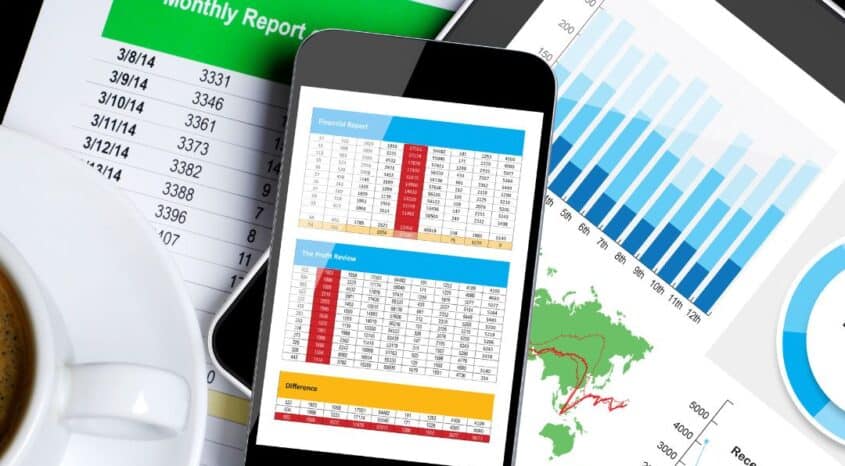Let’s be frank – when it comes to today’s e-commerce environment and how modern businesses operate, ERPs just no longer cut it. With a host of well-known risks, a brand of any size or influence can be hit by the gridlocked processes, eye-watering costs and long-lasting reputational damage of a failed ERP implementation – as these high-profile cases show.
Read on for four infamous tales of ERP-related disasters that were catastrophic for business – and get the full facts on why traditional ERPs spectacularly fall down when it comes to supporting your fast-growing enterprise.
Revlon
Huge ERP failure has the brand sued by its own shareholders
A merger is a textbook case for a software upgrade; a progressive enough platform should seamlessly integrate multiple processes and data into one central, real-time source of truth.
However, when Revlon acquired Elizabeth Arden Inc. in 2018 and signed up with ERP, SAP HANA, to merge their operations, the results were far from harmonious.
In a resulting lawsuit that was rife with blame-shifting, Revlon claimed that ‘ERP-related disruptions’ completely bungled processes at the brand’s North Carolina manufacturing plant, claiming the software wasn’t ‘mature enough’ for such a large-scale integration (something SAP HANA disputes).
In any case, the migration failure ended up costing the brand a cool $64M in sales losses. Revlon’s stock value crashed so much within 24 hours that even its own investors sued.
Worth & Co.
Deadlocked ERP implementation bleeds money and time, achieving nothing
It’s a fact that 75% of ERP implementations fail, and 59% take longer to implement than originally quoted – yet merchants will still end up paying thousands – or in this case, millions – for the effort.
When the Pennsylvania-based manufacturing company Worth & Co. sought an ERP upgrade with Oracle’s E-business Suite, they hired an IT-systems operator to implement it by late 2015.
Hold-ups in deployment pushed the launch to early 2016. This became 2017… then 2018. By 2019, despite Worth & Co. paying Oracle’s $260,000 in training fees and even hiring a new IT-systems operator to move things along, Oracle was still not implemented nor adequately customized for Worth & Co’s specific needs.
Eventually Worth & Co. sued Oracle for the $4.5M it had spent on multiple unsuccessful implementation efforts for ‘an essentially non-functioning product’.
The lawsuit is still ongoing.
Nike
A triple software upgrade ends in $400M losses
ERP failures can take even the biggest-hitting brands to their knees – as was the case when Nike’s nightmare triple upgrade became one of its most brand-damaging mistakes.
Back in 2000, Nike attempted to implement three softwares to streamline its processes into one slick operational machine: a supply management system by i2 Technologies; a SAP ERP; and a CRM (customer relationship management) software by Siebel Systems.
The clunky triple implementation was a disaster. Of the many undesired outcomes, Nike said the i2 product had ‘failed to properly match inventories with customer demand’ – leaving the athletics giant with masses of excess inventory in some lines and shortages in others.
Ultimately the brand lost an eye-watering $400M – leading to a cool 20% dip in stock value, and a handful of lawsuits to boot.
Hershey’s
ERP disaster halts manufacturing of $100M worth of stock – right in time for busiest period
In another vintage case that’s far from irrelevant, treasured candy brand Hershey’s suffered a botched ERP migration in 1999 that came just before their busiest sales period – Halloween and Christmas.
One of the largest chocolate manufacturers in the world, Hershey’s had spent $112M on implementing a combination of ERP systems in time for Y2K to hit – but the immense task, rife with ‘testing, data migration and training shortcuts’, ended up in the brand’s supply chain halting completely. While kids were braced to load up their Halloween hauls, a planned $100M worth of Hershey’s Kisses hadn’t even been manufactured.
It was a heavy hit for Hershey’s as profits dropped 19%, its stock value by 35%, and the brand lost $150M in damages.
Whether you’re a young fast-growing brand or a multinational mid-level enterprise, here’s why opting for a traditional ERP can kaibosh business growth:
- ERP implementation can take YEARS and fails 75% of the time. ERP providers often give simplified setup documentation and leave you to your own devices. (Lab equipment retailer, USA Labs, found this out the hard way after their failed Cin7 implementation came without a refund.)
Brightpearl has a 97% success rate and a speedy average setup time of 110 days. You’ll have contact with a expert implementation team to support you during and after deployment.
- Connecting to third-party apps such as Amazon, Shopify and Shipstation is a lengthy, time-consuming process for ERPs, and usually results in unforeseen extra costs. ERP providers will also charge for administration, changes and requests, support, updates and upgrades, making the platform extremely costly as your business grows. (This was the case for appliance repair company Snap Supply, who found the cumulative time and expense of connecting to an ERP to be unjustifiable). Unlike other vendors, at Brightpearl we scope out your project at our expense before you sign any paperwork. We’ll provide a fixed cost quote before you sign your contract, so you’ll know exactly what to expect, avoiding any nasty surprises that often happen with poorly planned implementations.
Brightpearl’s easy Plug & Play integrations seamlessly connect with third-party apps, and our deep API access means we can build any connections you require.
- ERPs are dated – their ‘one-size-fits-all’ approach makes them unsuited to the specific operational complexities of most retail businesses. Attempting to customize means processes will be slowed or even halted completely. (Just ask fashion retailer Goose & Gander, whose previous ERP failure let them down in what felt like ‘an expensive, never-ending experience’.)
Brightpearl is made to be future-proof. With a host of agile, cutting-edge features, it’s a built-for-retail operating system that scales as your business does.




